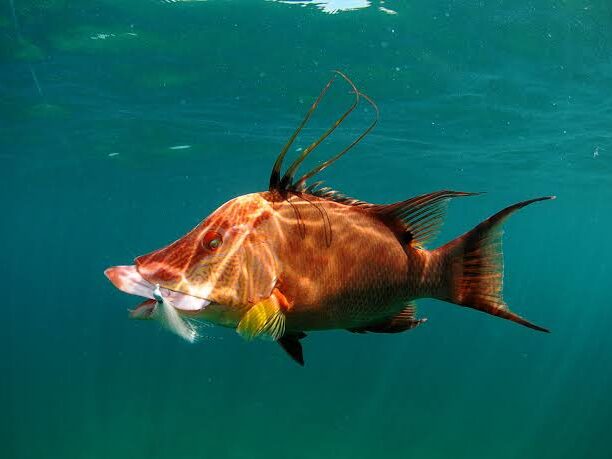How To Catch Hogfish: The Ultimate Cheat Sheet For Fisherman
Written By: Captain Kody Michael
Introduction: How to Catch Hogfish
When considering how to catch Hogfish, you have a couple of great methods to choose from. Spearfishing offers an exciting experience, giving you the opportunity to see fish in their natural habitat and harvest them by using a speargun or a pole spear. Here’s one of our YouTube videos when we spearfish for Hogfish a few miles from the Dry Tortugas.
While spearfishing is a common method for landing Hogfish, many might to know if catching a Hogfish on rod and reel is possible, and if so.. how?
In this blog, we’ll dive into the world of Hogfish fishing, comparing two methods of harvesting these fish: spearfishing and fishing. Whether you’re looking for pointers on spearfishing or prefer to fish rod and reel, we’ll share tips to help you master both.
Understanding Hogfish
Depth and Habitat
Hogfish are primarily found in the warm, shallow waters of the Atlantic and the Gulf of Mexico, and live in depths ranging from 15 to 300 feet. They are commonly found in habitats rich in marine life, such as coral reefs, rock formations, wrecks, and grassy sea floors, where food sources like shrimp, crabs, and mollusks are abundant.
Rocky areas, in particular, are productive fishing spots as they offer great hiding places for hogfish and attract a variety of other fish species.
Physical Characteristics
Hogfish belong to the wrasse family. They have a very distinct look among fish and can grow up to 30 inches in length. One of the most notable features of Hogfish is their elongated snout, which they use to forage for crustaceans and other small prey hidden among the reef.
Their color varies but typically Hogfish have a pinkish or reddish hue with white patterns. Hogfish can change color, especially when they are stressed or excited. This ability to change color helps them blend into their surroundings, providing some camouflage from predators. Additionally, during mating displays or aggressive encounters, their colors can become more vivid.
Patience is Key
Patience is crucial when fishing for hogfish and you may encounter other bottom fish like grunts or snappers in the process. These species can often bite first, and while they’re fun to catch, it’s best to be prepared to wait a bit longer for hogfish to take your bait.
Expect to spend some time fine-tuning your technique and adjusting your bait presentation as you wait for the hogfish to show up. Keep an eye on your surroundings, and don’t hesitate to change locations if you aren’t having any luck. Remember, fishing is as much about enjoying the experience as it is about landing the catch, so embrace the process and enjoy the time spent on the water.
Conclusion
In summary, whether you prefer the direct approach of spearfishing or the patience required for rod and reel fishing, both methods offer unique experiences for how to catch hogfish. Each technique has its own challenges, but the excitement of getting hooked up is what makes fishing for Hogfish such a fun experience.
Catching hogfish on rod and reel can be difficult but is fun and rewarding when successful. We’ve explored the ideal depths and habitats where these fish live, as well as the best baits and tackle setups to improve your chances. We also discussed effective techniques for rigging and presenting your bait, emphasizing the importance of patience while you wait for the bite.
As you prepare for your next fishing trip, remember that every experience is an opportunity to learn and improve your skills. Whether you’re an avid fisherman or just starting out, learning how to catch hogfish offers a challenge that can lead to an epic outing on the water—and a great meal for dinner. So grab your gear and get out there!
We started Reel Guides to make it easy to book fishing trips around the United States.
Click here to browse and book your next fishing charter in Florida!
Readers can benefit from a special promotion code from Mustad Fishing.
Use promo code REELGUIDES for an additional 20% off your next order at www.mustad-fishing.com.




